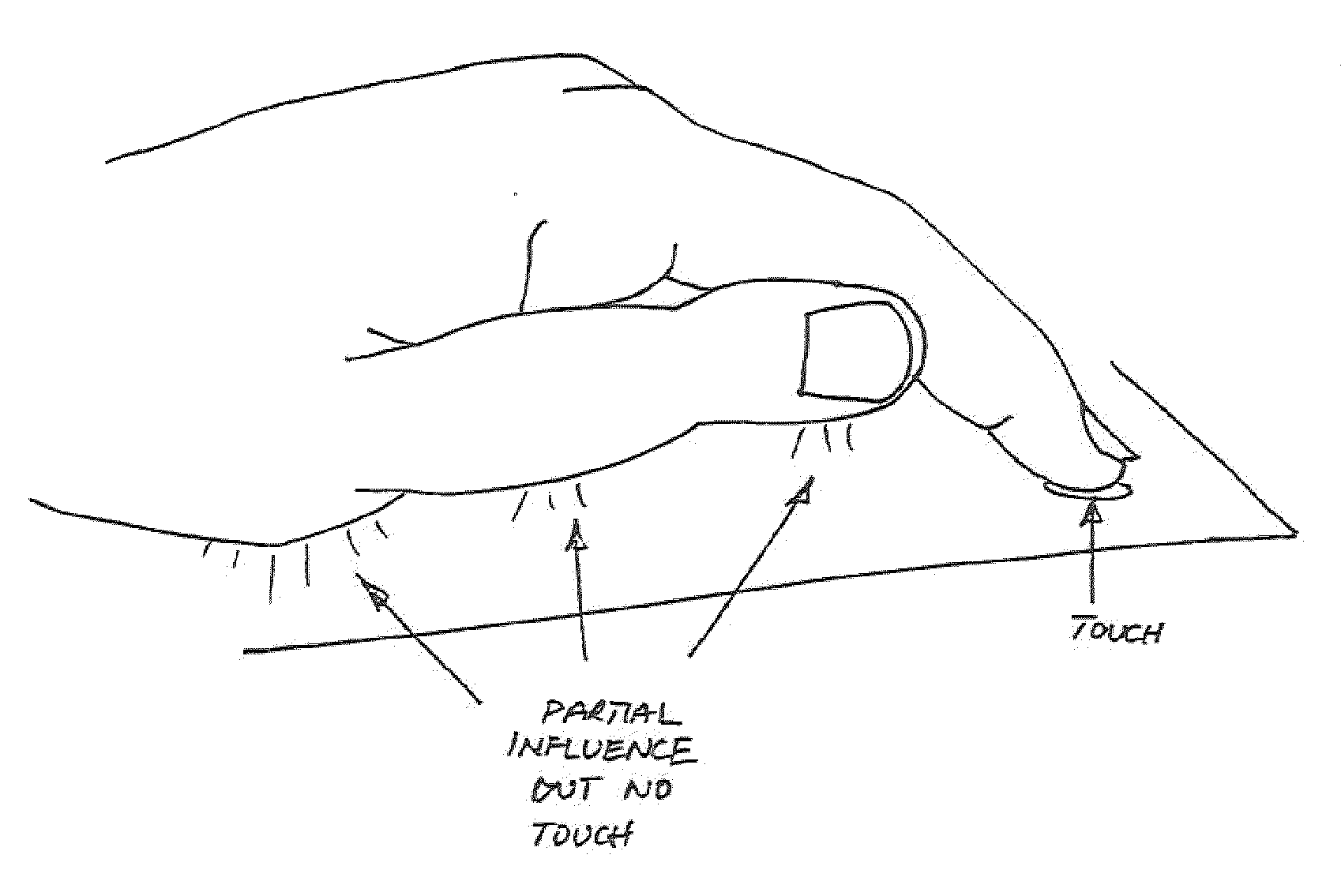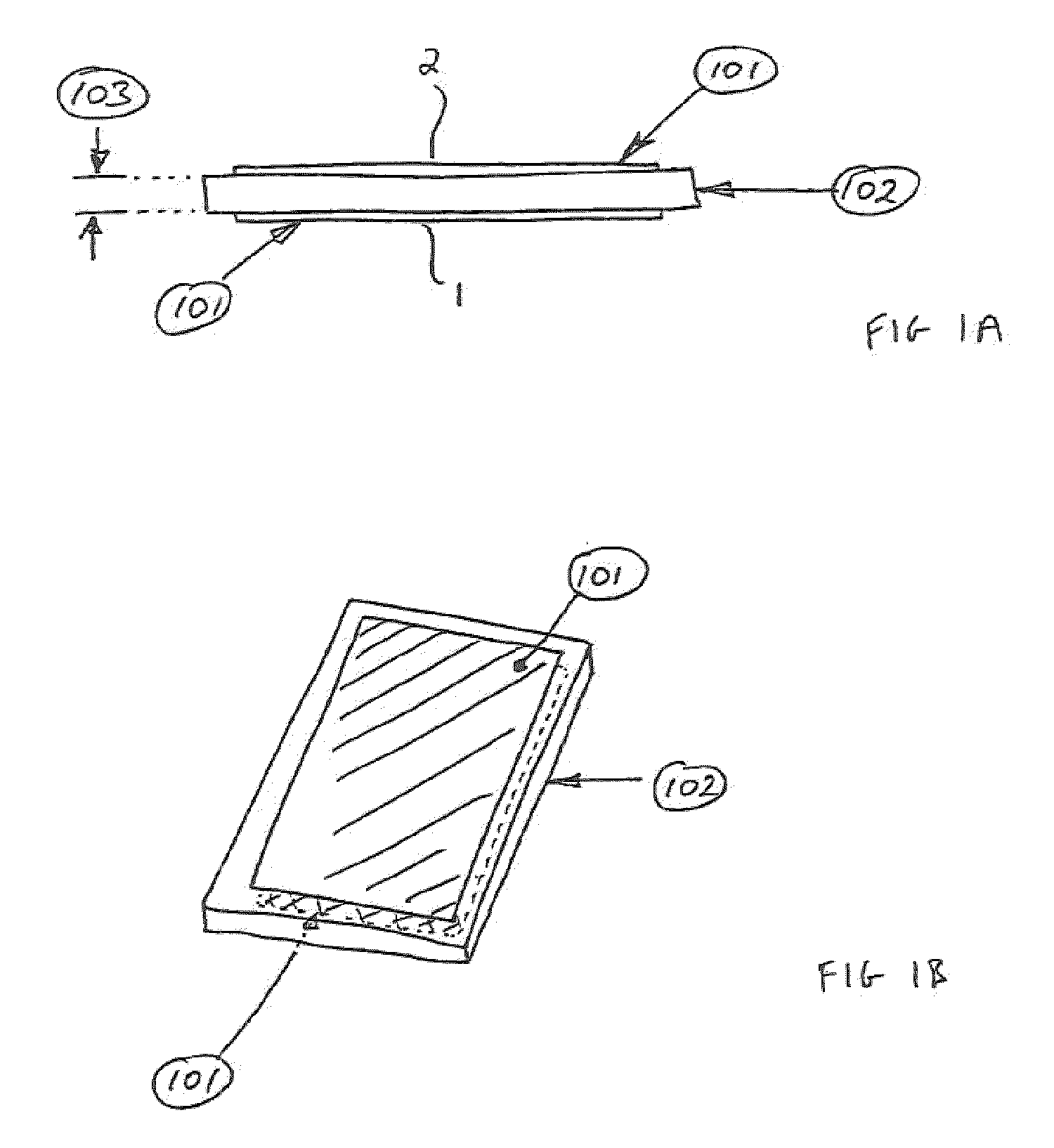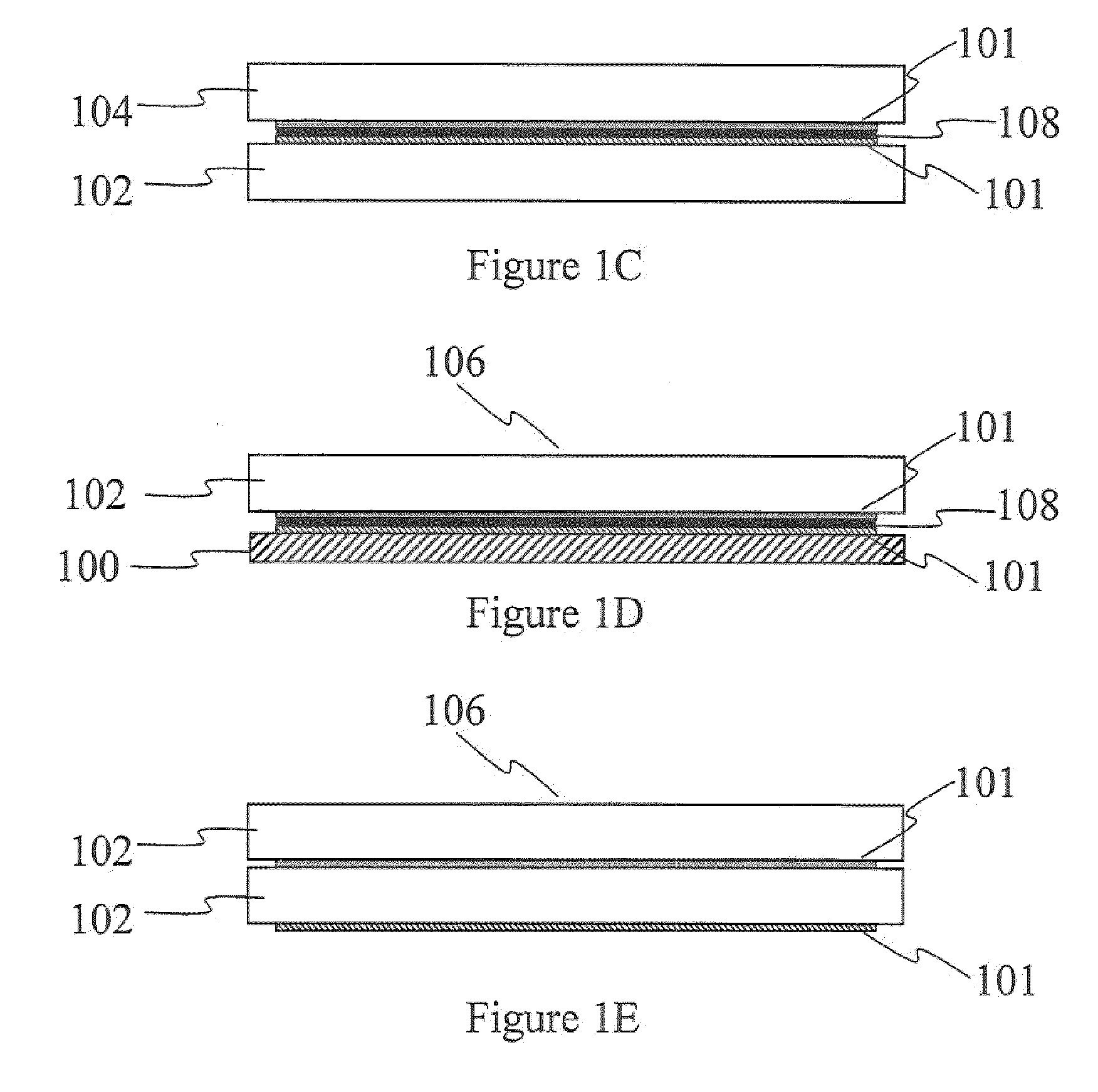Capacitive Position Sensor
a capacitive position and sensor technology, applied in the field of capacitive position sensors, can solve the problems of display screen, display screen, display screen,
- Summary
- Abstract
- Description
- Claims
- Application Information
AI Technical Summary
Benefits of technology
Problems solved by technology
Method used
Image
Examples
Embodiment Construction
[0074]Described herein is a two-electrode layer construction for a capacitive touch screen or 2DCT sensor.
[0075]FIGS. 1A and 1B are schematic drawings in side view and perspective view of a two-electrode layer construction for a capacitive touch screen or 2DCT sensor. The layers 101 can generally be made of any conductive material and the layers can be arranged to oppose each other on two sides of any isolating substrate 102 such as glass, PET, FR4 etc. The thickness of the substrate 103 is non critical. Thinner substrates lead to higher capacitive coupling between the layers which must be mitigated in the control chip. Thicker substrates decrease the layer to layer coupling and are generally more favorable for this reason (because the measured change in capacitance is a larger fraction of the layer-to-layer capacitance so improving signal-to-noise ratio). Typical substrate thickness' range from 10's to 100's of μm. Furthermore it will appreciated that a dielectric or isolating laye...
PUM
 Login to View More
Login to View More Abstract
Description
Claims
Application Information
 Login to View More
Login to View More - R&D
- Intellectual Property
- Life Sciences
- Materials
- Tech Scout
- Unparalleled Data Quality
- Higher Quality Content
- 60% Fewer Hallucinations
Browse by: Latest US Patents, China's latest patents, Technical Efficacy Thesaurus, Application Domain, Technology Topic, Popular Technical Reports.
© 2025 PatSnap. All rights reserved.Legal|Privacy policy|Modern Slavery Act Transparency Statement|Sitemap|About US| Contact US: help@patsnap.com



